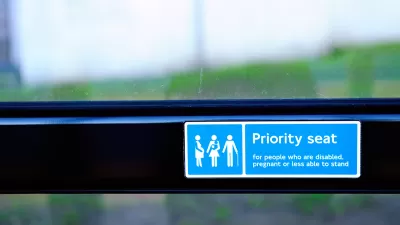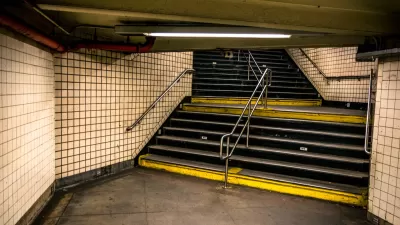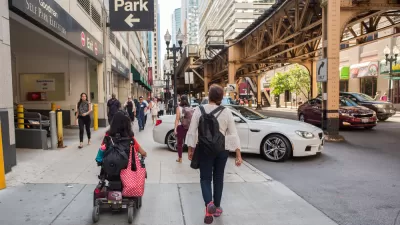The New Urban Agenda, which sets a new global strategy for sustainable urbanization, still has shortcomings regarding universal access for people with special needs.

Citiscope is profiling the 16 constituent groups comprising the General Assembly of Partners (GAP), which is "the main vehicle for civil society to organize and advocate ahead of Habitat III, the U. N. urbanization summit in October in Quito."
The most recent article in the series is written by Gregg Scruggs, who focuses on the push for universal accessibility in urban areas. To understand the challenges of universal accessibility, Scruggs speaks with Victor Pineda, who runs the Disability Inclusive and Accessible Urban Development Network, is a professor of urban planning at the University of California, Berkeley, and chairs the GAP constituent group for disabled persons.
"According to Pineda, roughly 1 billion people have some kind of disability. But not all disabilities are created equal, and the wide range of possible hindrances means there are few one-size-fits-all solutions," writes Scruggs.
Achieving the goals of the constituent group has also proved a challenge. According to Scruggs, the final draft of the New Urban Agenda, as released in September, included the words "persons with disabilities" 12 times. "However, the document does not mention 'universal design' or 'reasonable accommodations', two linchpin concepts in legislation to protect the disabled, nor the convention itself," explains Scruggs.
Scruggs also speaks with Mohammed Loutfy, the executive director of the Arab Forum for the Rights of People with Disabilities and a co-chair of the GAP group. Loufty describes his experiences with poor accessibility as well as the next political and public relations steps for the accessibility agenda to achieve a greater share of the New Urban Agenda.
FULL STORY: ‘I love cities, but they don’t all love me back,’ disabled advocate says ahead of Habitat III

Planetizen Federal Action Tracker
A weekly monitor of how Trump’s orders and actions are impacting planners and planning in America.

San Francisco's School District Spent $105M To Build Affordable Housing for Teachers — And That's Just the Beginning
SFUSD joins a growing list of school districts using their land holdings to address housing affordability challenges faced by their own employees.

The Tiny, Adorable $7,000 Car Turning Japan Onto EVs
The single seat Mibot charges from a regular plug as quickly as an iPad, and is about half the price of an average EV.

Seattle's Plan for Adopting Driverless Cars
Equity, safety, accessibility and affordability are front of mind as the city prepares for robotaxis and other autonomous vehicles.

As Trump Phases Out FEMA, Is It Time to Flee the Floodplains?
With less federal funding available for disaster relief efforts, the need to relocate at-risk communities is more urgent than ever.

With Protected Lanes, 460% More People Commute by Bike
For those needing more ammo, more data proving what we already knew is here.
Urban Design for Planners 1: Software Tools
This six-course series explores essential urban design concepts using open source software and equips planners with the tools they need to participate fully in the urban design process.
Planning for Universal Design
Learn the tools for implementing Universal Design in planning regulations.
Smith Gee Studio
City of Charlotte
City of Camden Redevelopment Agency
City of Astoria
Transportation Research & Education Center (TREC) at Portland State University
US High Speed Rail Association
City of Camden Redevelopment Agency
Municipality of Princeton (NJ)





























